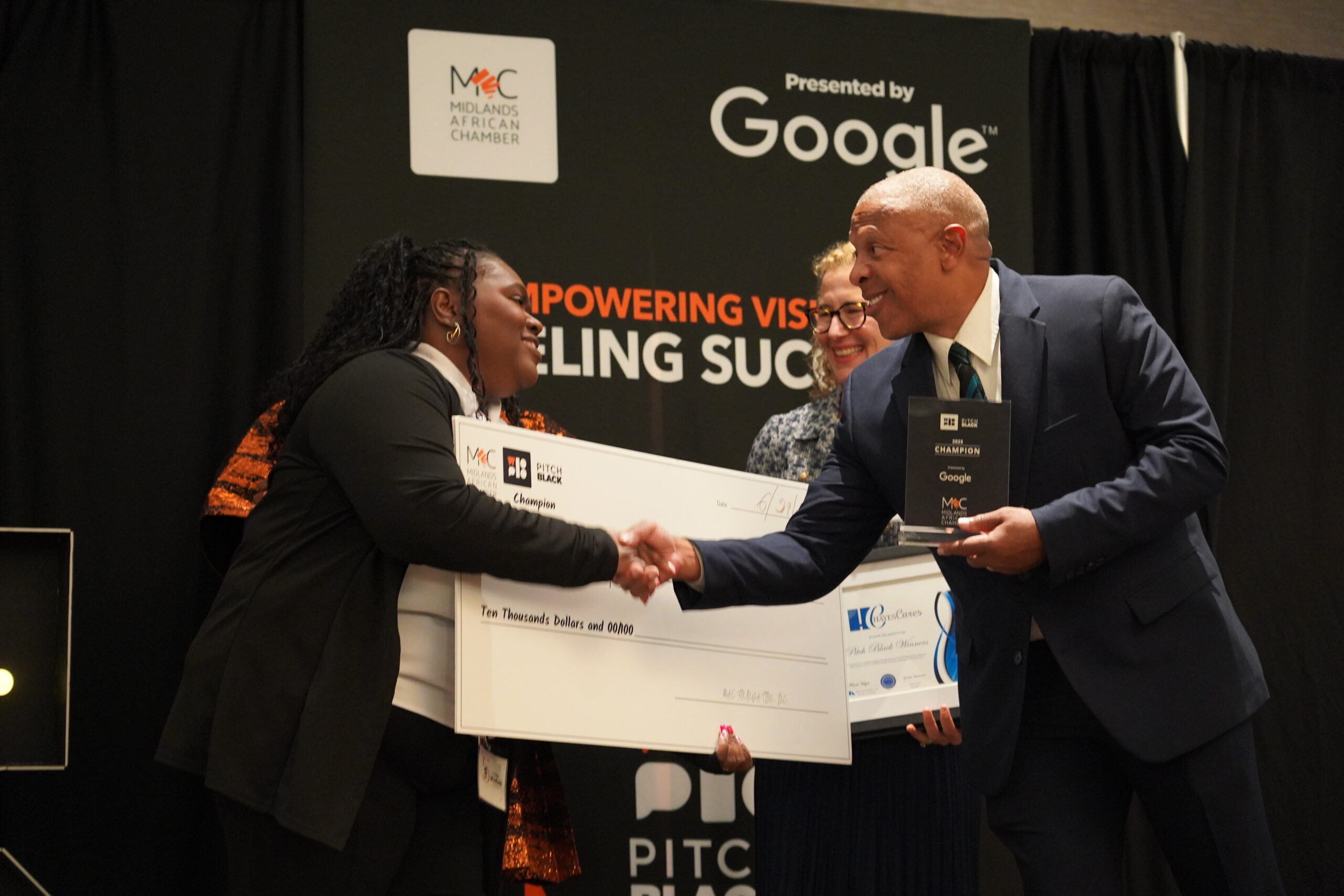WalkWise Helping Seniors Walk…Wisely
Last month, on August 21, World Senior Citizen Day was celebrated to not only honor elderly adults but to also raise awareness of issues affecting this growing demographic. According to the 2019 revision of the UN DESA World Population Prospects, 21.4 % of the world’s population will be 60 years and older by 2050, significantly up from the 13.5% projected for 2020. Correspondingly, there is an increasing demand, the world-over, for products that will enhance the quality of life and well-being of these senior citizens.
Fargo, North Dakota-based smart device startup, WalkWise, is already forging ahead in addressing such elder care needs.
Motivated by concerns to preserve the health, safety, and independence of his own senior family members, University of Portland (UP) and MIT trained mechanical engineer, Peter Chamberlain, began work to create a simple, unobtrusive fitness and safety monitoring device that could be attached to his relatives’ walkers, to track their activity and consequent well-being, 24/7. Walkers are popular ambulatory aids used by millions of elderly adults who like Chamberlain’s relatives suffer from mobility issues which put them at a higher risk for falling and incurring serious injury.
Chamberlain’s work on smart walker technology began as a senior design project in engineering while he was still at UP in Oregon. He continued to further develop the technology even after moving on to graduate school in Boston. At the time, Chamberlain’s focus was more on facilitating mobility for those rehabilitating from ambulatory-inhibiting injuries, creating what could be described as an automated walking-aid. He conferred with physical therapists (PTs) to determine whether they would use this automated product and discovered that they were more interested in tracking the actual senior mobility/activity data. Such information would give them better insight into the associated functional health of their clients helping them structure a more relevant course of therapy.
This revelation led Chamberlain to make modifications to the system so that pertinent health info such as walker-user activity, (for example, walking-speed, distance, and frequency) could all be tracked. He developed a device that could be attached directly onto the wheel of the walker like a hubcap, which would collect walker motion data that is subsequently uploaded to the Cloud through a central node connected to a WiFi network. The data can then be reviewed by anyone with authorized access to the corresponding WalkWise app account – the user, family members, caregivers and medical staff – and applied to guide individualized wellness programs.
During these early stages in development, Chamberlain’s emphasis shifted again as a result of a series of challenging events affecting his family. Both of his grandmothers suffered falls that severely threatened their health and quality of life. At the time, they each had a walker.
“One night, my Grandma Myrla fell and broke her hip while on her way to the bathroom,” recounted Chamberlain, “She had to crawl all the way to the night stand for her phone to call for help. Then Grandma Kathleen fell at home when not using her walker nor wearing her alert pendant and was also injured badly. She was thankfully found later that day by the gardener who luckily saw her through a window.”
Around this time, a close family friend also fell but remained incapacitated, lying on the floor of her senior living residence for two days before she received any care. Thankfully she survived. However, she was greatly affected by the ordeal.
“This should not be happening in this day and age,” Chamberlain declared, “No one should be lying on the floor, injured without anyone knowing about it, without receiving help for any extended period of time.”
Nevertheless, according to the U.S. Centers for Disease Control and Prevention, each year, one in four elderly Americans, age 65+, experiences a fall, which as reported by the National Council on Aging (NCOA), is the major cause of life-threatening injuries among elderly adults, especially when care is delayed. Delays in care are associated with a poorer outcome. The development of strategies to both reduce the number of falls and increase the timeliness of care is greatly needed.
Chamberlain’s family was also addressing concerns regarding the well-being of another elderly relative, his Grandma Ann, who suffered from Alzheimer’s disease.
“Though she was at a senior living community, our family had absolutely no idea what was going on day to day,” said Chamberlain, “The staff are not able to monitor every single thing that the residents are doing at all times nor do they have the means to communicate this type of information with families.”
As a result of these personal experiences, Chamberlain’s awareness of the challenges facing seniors was greatly heightened. He thought of what other families must also be going through and was compelled to ensure that the WalkWise system included safety monitoring as a key component.
The system now includes various safety checks and sends out alerts in the form of push notifications, texts, emails and /or phone calls. Should the walker not be used for several hours during the day, if it tips over indicative of a possible fall, if there is no activity by a certain time in the morning, if overall activity for the day is low, and if there is night walking, the frequency of which is associated with the likelihood of a urinary tract infection, alerts are sent out to the computers and/or mobile devices of family members and other registered care providers. Each password-protected WalkWise device can be accessed by multiple accounts such that onsite senior living community healthcare staff may receive notifications regarding separate concerns from family members.
The WalkWise system is designed to cater to a range of user safety needs without compromising independence.
Chamberlain explains, “For those with dementia, safety monitoring is important and memory care centers are set up to deal with specific needs. WalkWise can complement procedures, already in place at these facilities. However, for those seniors who are not cognitively impaired, but are at risk for falls and terrified of losing their independence to a restrictive facility, WalkWise provides a peace of mind.”
Fall risk among seniors is mitigated by activities that help strengthen their legs, liking walking. WalkWise is not a medical device but can be used in wellness programs or incorporated in a senior’s fitness regimen.
“It’s really all about making walker use fun, encouraging activity by providing some incentive, some positive feedback,” said Chamberlain, “Handouts with information on how much they are using the walker every day can be given to the users and weekly or monthly goals can be set. Some of our client communities give out rewards for meeting these goals.”
The resulting increase in mobility reduces the risk of falling, supports independence and instills pride. All of which contributes to improved well-being and state of mind among elderly walker-users.
Unlike other systems on the market, WalkWise does not require expensive GPS surveillance, nor a lot of power to operate. There is no motion detection equipment to mount in the corners of rooms, that resemble cameras and look imposing and intrusive. Users do not have to remember to wear them nor have to access a smartphone to use.
Chamberlain designed WalkWise to be simple, discrete, convenient, effective and affordable. It was developed so that even a technologically challenged 80+ year-old client, with phone support was able to set one up herself. The WalkWise app is easily configured to send alerts and messages. Reports can be viewed online or printed out as preferred.
For individuals living at a private residence, the WalkWise system can be obtained directly through the Amazon marketplace or ordered from the company website.
WalkWise also partners with senior living communities who offer the service as an added amenity for their residents and their families.
“When families seeking a residence for their relative come through the doors of one of our senior living community partners, our clients can point to the WalkWise service and say that they are going above and beyond to not only keep loved ones safe but to also keep the families engaged,” explains Chamberlain, “The families get access to the app which provides them with some peace of mind, reducing guilt and concerns, as they can see what is going on with their loved ones and interact with them more regularly.”
This is particularly reassuring for families whose elderly relative suffers from Alzheimer’s or dementia which can already be distancing.
Chamberlain added, “In the industry, many are building in anticipation of the impending silver wave, preparing for the aging baby boomer population. That means there are a lot of empty rooms right now and so these senior living communities are looking for a competitive advantage to attract these senior clients. WalkWise is a service that they can adopt that will perhaps make the difference.”
Though the journey with WalkWise began in his native Oregon, Chamberlain is grateful that it is continuing in North Dakota. Not only does he have supportive family in North Dakota, (his wife is from the region), he also receives much pivotal guidance from Fargo-based entrepreneurial-ecosystem-building group, Emerging Prairie, which also provides the company’s current working space, and from other beneficial programs run by the state for entrepreneurs.
Chamberlain has received key funding for WalkWise through South Dakota-based firms, Falls Angel Fund in Sioux Falls and Hub City Capital in Aberdeen.
“Both have been fantastic sources of support,” declare a grateful Chamberlain, “Investors in the region want to see products that are delivering real world results, making an impact. I was able to point to how WalkWise helped my grandparents. Once this impact was recognized, they were excited to partner with us.”
As for the future…Chamberlain’s goal is to have a device on every walker, in every residence, supporting the elderly relatives of others everywhere WalkWise-ly.
For more information about this company, visit www.walkwise.com
WalkWise YouTube Videos:




